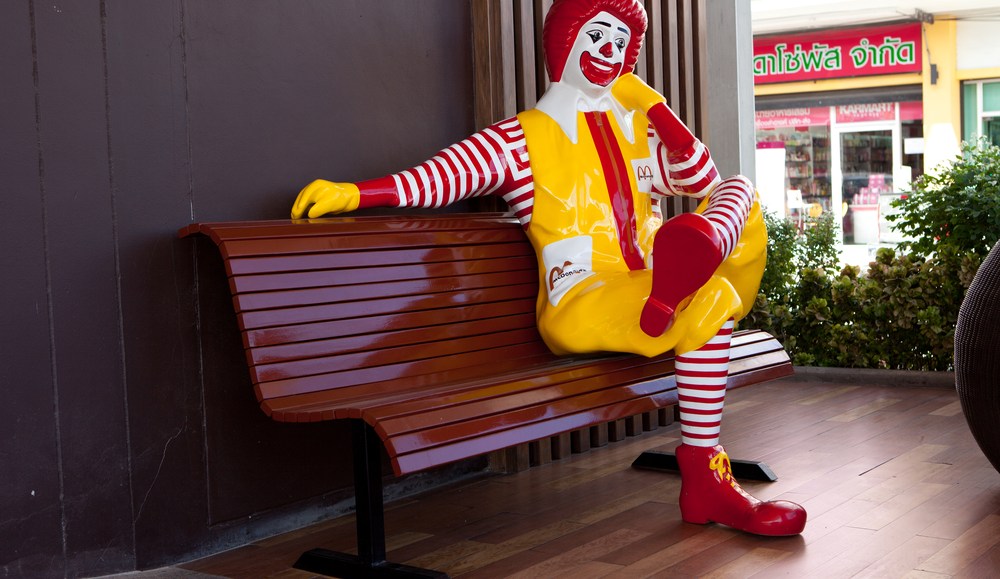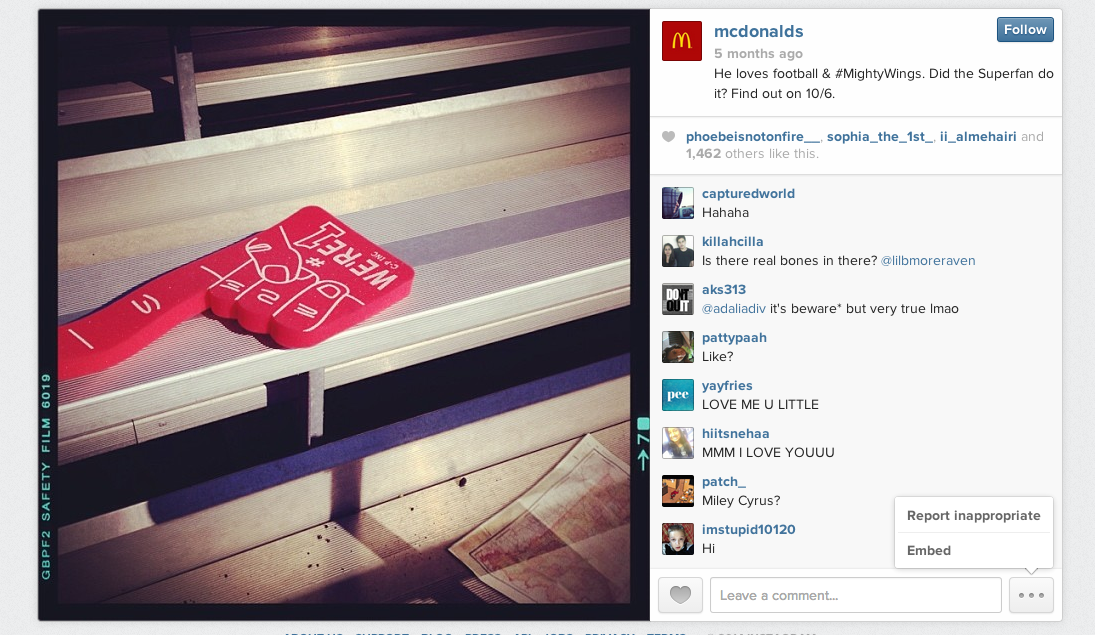
Fun fact: On any given day, more than 100,000 tweets are addressed directly to McDonald’s — that’s about a tweet a second.
In order to manage that Big Mac-sized volume, the world’s largest burger chain has help from agencies Golin Harris, DDB and OMD, and a few in-house experts. Yet, Rick Wion, McDonald’s director of social media, said it’s hard to count the number of people that work on its social team, because that number is in constant flux.
“We have a Twitter team that we staff with people from members all over our company that want to learn more about social,” said Wion. “A lot of our social team members are doing social as part of other jobs as well.” There isn’t a formalized process in place, Wion added, employees simply reach out to Wion to get involved.
The fast food chain has an official presence on Twitter, Facebook, Instagram, Pinterest, Google Plus, Vine and has even recently joined Snapchat, not to mention separate accounts for its local followings worldwide (here’s the McDonald’s Spain Facebook page, for example). Just with accounts on the national level in the U.S., McDonald’s counts 32 million followers on social channels.
“We’re always looking at how the pieces fit together to tell different stories,” he said. “We have overlapping audiences, and we don’t want to cut and paste across all of them to keep our fans entertained.”
For example, this past fall McDonald’s unveiled a new menu item, Mighty Wings, and decided to promote it by creating a mystery involving NFL players Joe Flacco, Colin Kaepernick and Victor Cruz across both television and its social channels. McDonald’s kicked off the campaign on television and provided a branded hashtag #MightyWings for people to follow along on social. Online, McDonald’s left clues on different social channels and challenged its fans to solve “Who took the Mighty Wings?”
The hashtag #MightyWings currently has more than 10,000 posts on Instagram and has been mentioned more than 5,000 times on Twitter during the past week, according to social analytics site Topsy.
McDonald’s hashtags don’t always go over well, though. The company has had its share of hashtag disasters in the past, most notably its #McDStories fiasco from early 2012. After launching the campaign, the hashtag was hijacked by Twitter users wanting to share their jokes and not-so-fond memories of McDonald’s.
@tonymanolatos Dude, I used to work at McDonald’s. The #McDStories I could tell would raise your hair.
— Alex Roth (@alexroth3) January 24, 2012
The company has since put better measures in place to address crises when they arise.
“We developed a ‘playbook’ with guidelines for response and a very simple red, yellow, green light system,” Kim Musgrave, McDonald’s social media team leader recently told Social Media Today. McDonald’s also benefits from having nearly $1 billion to spend on overall advertising and can afford to reach and service many different markets quickly.
“Because of its size, McDonald’s is used to receiving attacks,” said Scott Hume, the editor-in-chief of BurgerBusiness.com. “They’re always in crisis mode, and it’s why they have channels in all of those different communities. Not many others can do that. McDonald’s is good at responding to tweets, pro and con. With anyone else, you’re likely to hear something, but not immediately.”
You’re also likely to get a photo or two. McDonald’s has recently joined Snapchat at the urging of two members of its social team who are themselves personal users and fans of the service. The idea is that the platform could keep the burger chain in touch with a younger demographic.
“Snapchat was a new and relevant way for McDonald’s to engage with our millennial fans, providing them with behind-the-scenes access to exclusive content,” said Lainey Garcia, McDonalds manager of external communications, and one of the Snapchat advocates.
For one of its first Snapchat campaigns, McDonald’s chose to reveal, piece-by-piece, footage of a new TV commercial being shot, so that it made a larger, 40-second video when put together.
“Throughout the day, we were using the stories feature to tell a running narrative instead of just a single snap,” said Wion. Here’s the end result:
More in Marketing

Pandora is betting on AI agents to scale service and emotional selling during the peak holiday season
Pandora is using AI agents to scale customer service and replicate emotional in-store selling online, just as peak season puts pressure on margins and teams.

Rembrand’s CEO wants to grow virtual ad placements in streaming, and he’s looking elsewhere for models
Omar Tawakol wants to improve advertising within the streaming world, and is working with advertisers and publishers to improve that experience.

Marketers are keen to use generative AI in ad campaigns, but hidden costs lurk
Marketers across the industry want to use AI to cut down on time spent in creative production. It’s not so simple in practice.






